Erman Tjiputra
FedEFM: Federated Endovascular Foundation Model with Unseen Data
Jan 28, 2025Abstract:In endovascular surgery, the precise identification of catheters and guidewires in X-ray images is essential for reducing intervention risks. However, accurately segmenting catheter and guidewire structures is challenging due to the limited availability of labeled data. Foundation models offer a promising solution by enabling the collection of similar domain data to train models whose weights can be fine-tuned for downstream tasks. Nonetheless, large-scale data collection for training is constrained by the necessity of maintaining patient privacy. This paper proposes a new method to train a foundation model in a decentralized federated learning setting for endovascular intervention. To ensure the feasibility of the training, we tackle the unseen data issue using differentiable Earth Mover's Distance within a knowledge distillation framework. Once trained, our foundation model's weights provide valuable initialization for downstream tasks, thereby enhancing task-specific performance. Intensive experiments show that our approach achieves new state-of-the-art results, contributing to advancements in endovascular intervention and robotic-assisted endovascular surgery, while addressing the critical issue of data sharing in the medical domain.
Guide3D: A Bi-planar X-ray Dataset for 3D Shape Reconstruction
Oct 29, 2024Abstract:Endovascular surgical tool reconstruction represents an important factor in advancing endovascular tool navigation, which is an important step in endovascular surgery. However, the lack of publicly available datasets significantly restricts the development and validation of novel machine learning approaches. Moreover, due to the need for specialized equipment such as biplanar scanners, most of the previous research employs monoplanar fluoroscopic technologies, hence only capturing the data from a single view and significantly limiting the reconstruction accuracy. To bridge this gap, we introduce Guide3D, a bi-planar X-ray dataset for 3D reconstruction. The dataset represents a collection of high resolution bi-planar, manually annotated fluoroscopic videos, captured in real-world settings. Validating our dataset within a simulated environment reflective of clinical settings confirms its applicability for real-world applications. Furthermore, we propose a new benchmark for guidewrite shape prediction, serving as a strong baseline for future work. Guide3D not only addresses an essential need by offering a platform for advancing segmentation and 3D reconstruction techniques but also aids the development of more accurate and efficient endovascular surgery interventions. Our project is available at https://airvlab.github.io/guide3d/.
CathAction: A Benchmark for Endovascular Intervention Understanding
Aug 23, 2024Abstract:Real-time visual feedback from catheterization analysis is crucial for enhancing surgical safety and efficiency during endovascular interventions. However, existing datasets are often limited to specific tasks, small scale, and lack the comprehensive annotations necessary for broader endovascular intervention understanding. To tackle these limitations, we introduce CathAction, a large-scale dataset for catheterization understanding. Our CathAction dataset encompasses approximately 500,000 annotated frames for catheterization action understanding and collision detection, and 25,000 ground truth masks for catheter and guidewire segmentation. For each task, we benchmark recent related works in the field. We further discuss the challenges of endovascular intentions compared to traditional computer vision tasks and point out open research questions. We hope that CathAction will facilitate the development of endovascular intervention understanding methods that can be applied to real-world applications. The dataset is available at https://airvlab.github.io/cathdata/.
Scalable Group Choreography via Variational Phase Manifold Learning
Jul 26, 2024Abstract:Generating group dance motion from the music is a challenging task with several industrial applications. Although several methods have been proposed to tackle this problem, most of them prioritize optimizing the fidelity in dancing movement, constrained by predetermined dancer counts in datasets. This limitation impedes adaptability to real-world applications. Our study addresses the scalability problem in group choreography while preserving naturalness and synchronization. In particular, we propose a phase-based variational generative model for group dance generation on learning a generative manifold. Our method achieves high-fidelity group dance motion and enables the generation with an unlimited number of dancers while consuming only a minimal and constant amount of memory. The intensive experiments on two public datasets show that our proposed method outperforms recent state-of-the-art approaches by a large margin and is scalable to a great number of dancers beyond the training data.
Controllable Group Choreography using Contrastive Diffusion
Nov 03, 2023Abstract:Music-driven group choreography poses a considerable challenge but holds significant potential for a wide range of industrial applications. The ability to generate synchronized and visually appealing group dance motions that are aligned with music opens up opportunities in many fields such as entertainment, advertising, and virtual performances. However, most of the recent works are not able to generate high-fidelity long-term motions, or fail to enable controllable experience. In this work, we aim to address the demand for high-quality and customizable group dance generation by effectively governing the consistency and diversity of group choreographies. In particular, we utilize a diffusion-based generative approach to enable the synthesis of flexible number of dancers and long-term group dances, while ensuring coherence to the input music. Ultimately, we introduce a Group Contrastive Diffusion (GCD) strategy to enhance the connection between dancers and their group, presenting the ability to control the consistency or diversity level of the synthesized group animation via the classifier-guidance sampling technique. Through intensive experiments and evaluation, we demonstrate the effectiveness of our approach in producing visually captivating and consistent group dance motions. The experimental results show the capability of our method to achieve the desired levels of consistency and diversity, while maintaining the overall quality of the generated group choreography. The source code can be found at https://aioz-ai.github.io/GCD
Music-Driven Group Choreography
Mar 27, 2023Abstract:Music-driven choreography is a challenging problem with a wide variety of industrial applications. Recently, many methods have been proposed to synthesize dance motions from music for a single dancer. However, generating dance motion for a group remains an open problem. In this paper, we present $\rm AIOZ-GDANCE$, a new large-scale dataset for music-driven group dance generation. Unlike existing datasets that only support single dance, our new dataset contains group dance videos, hence supporting the study of group choreography. We propose a semi-autonomous labeling method with humans in the loop to obtain the 3D ground truth for our dataset. The proposed dataset consists of 16.7 hours of paired music and 3D motion from in-the-wild videos, covering 7 dance styles and 16 music genres. We show that naively applying single dance generation technique to creating group dance motion may lead to unsatisfactory results, such as inconsistent movements and collisions between dancers. Based on our new dataset, we propose a new method that takes an input music sequence and a set of 3D positions of dancers to efficiently produce multiple group-coherent choreographies. We propose new evaluation metrics for measuring group dance quality and perform intensive experiments to demonstrate the effectiveness of our method. Our project facilitates future research on group dance generation and is available at: https://aioz-ai.github.io/AIOZ-GDANCE/
Style Transfer for 2D Talking Head Animation
Mar 22, 2023



Abstract:Audio-driven talking head animation is a challenging research topic with many real-world applications. Recent works have focused on creating photo-realistic 2D animation, while learning different talking or singing styles remains an open problem. In this paper, we present a new method to generate talking head animation with learnable style references. Given a set of style reference frames, our framework can reconstruct 2D talking head animation based on a single input image and an audio stream. Our method first produces facial landmarks motion from the audio stream and constructs the intermediate style patterns from the style reference images. We then feed both outputs into a style-aware image generator to generate the photo-realistic and fidelity 2D animation. In practice, our framework can extract the style information of a specific character and transfer it to any new static image for talking head animation. The intensive experimental results show that our method achieves better results than recent state-of-the-art approaches qualitatively and quantitatively.
Addressing Non-IID Problem in Federated Autonomous Driving with Contrastive Divergence Loss
Mar 11, 2023Abstract:Federated learning has been widely applied in autonomous driving since it enables training a learning model among vehicles without sharing users' data. However, data from autonomous vehicles usually suffer from the non-independent-and-identically-distributed (non-IID) problem, which may cause negative effects on the convergence of the learning process. In this paper, we propose a new contrastive divergence loss to address the non-IID problem in autonomous driving by reducing the impact of divergence factors from transmitted models during the local learning process of each silo. We also analyze the effects of contrastive divergence in various autonomous driving scenarios, under multiple network infrastructures, and with different centralized/distributed learning schemes. Our intensive experiments on three datasets demonstrate that our proposed contrastive divergence loss further improves the performance over current state-of-the-art approaches.
Uncertainty-aware Label Distribution Learning for Facial Expression Recognition
Sep 21, 2022
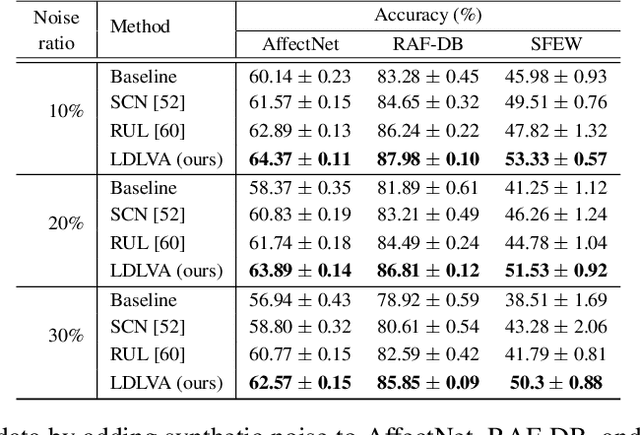
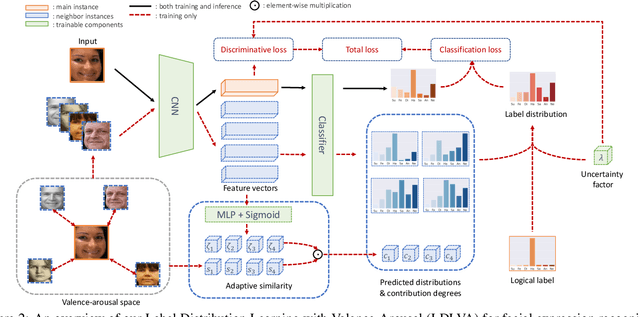
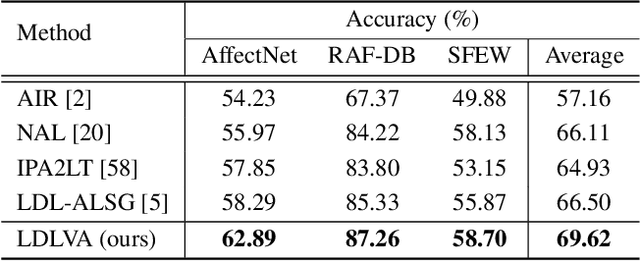
Abstract:Despite significant progress over the past few years, ambiguity is still a key challenge in Facial Expression Recognition (FER). It can lead to noisy and inconsistent annotation, which hinders the performance of deep learning models in real-world scenarios. In this paper, we propose a new uncertainty-aware label distribution learning method to improve the robustness of deep models against uncertainty and ambiguity. We leverage neighborhood information in the valence-arousal space to adaptively construct emotion distributions for training samples. We also consider the uncertainty of provided labels when incorporating them into the label distributions. Our method can be easily integrated into a deep network to obtain more training supervision and improve recognition accuracy. Intensive experiments on several datasets under various noisy and ambiguous settings show that our method achieves competitive results and outperforms recent state-of-the-art approaches. Our code and models are available at https://github.com/minhnhatvt/label-distribution-learning-fer-tf.
Multigraph Topology Design for Cross-Silo Federated Learning
Jul 21, 2022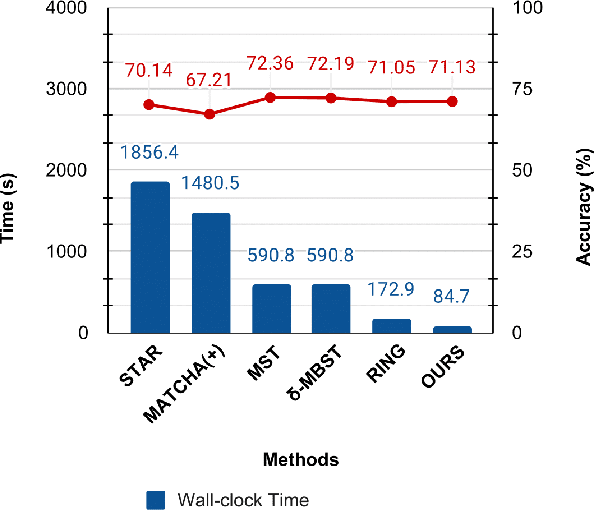
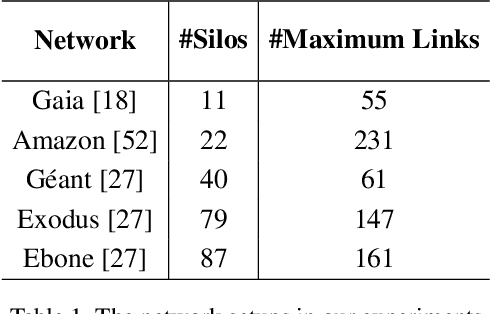
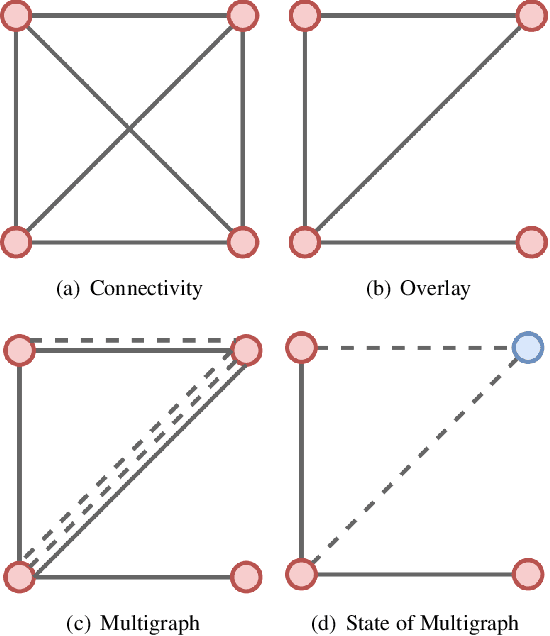
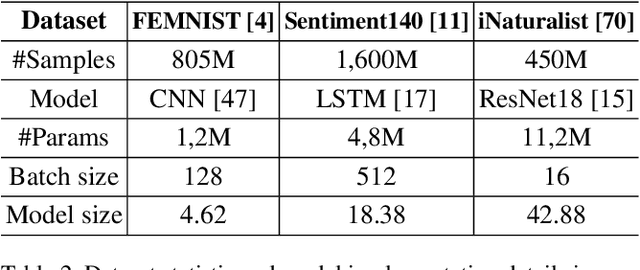
Abstract:Cross-silo federated learning utilizes a few hundred reliable data silos with high-speed access links to jointly train a model. While this approach becomes a popular setting in federated learning, designing a robust topology to reduce the training time is still an open problem. In this paper, we present a new multigraph topology for cross-silo federated learning. We first construct the multigraph using the overlay graph. We then parse this multigraph into different simple graphs with isolated nodes. The existence of isolated nodes allows us to perform model aggregation without waiting for other nodes, hence reducing the training time. We further propose a new distributed learning algorithm to use with our multigraph topology. The intensive experiments on public datasets show that our proposed method significantly reduces the training time compared with recent state-of-the-art topologies while ensuring convergence and maintaining the model's accuracy.
 Add to Chrome
Add to Chrome Add to Firefox
Add to Firefox Add to Edge
Add to Edge